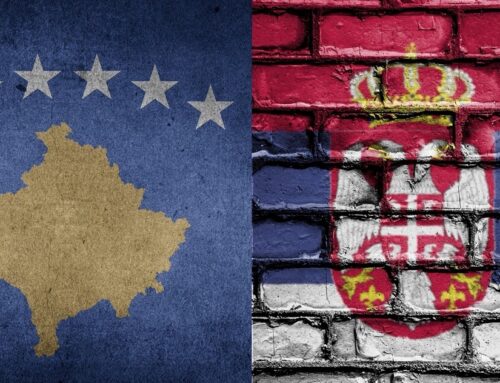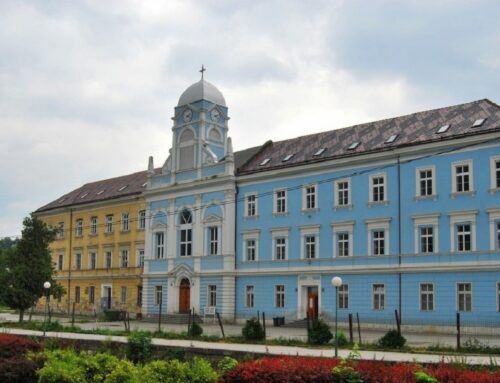Introduction
Carol Elisabeth Moseley Braun, a former US senator and a diplomat shared the idea that investment infrastructure is the most sustainable factor of social growth:“We must invest in infrastructure development and rebuilding communities to create jobs”[1]. It is important to denote that at each instant of history, investment was marked by the emergence of sudden financial crises. The infrastructural development of the Balkan region is stagnating for decades. There are numerous factors leading to stagnation: usurpation of the available funds (money – laundering), slow legal procedures (institutional approval for the realization of infrastructural projects, for example: construction of roads), absence of qualified teams of experts that will be charged to manage grandiose construction projects. The investment infrastructure of the Balkan region is a colourful political game where the spectrum of colours depicts the chaotic image of post-modern art ironically said. That is to say, chaotic policies create social revolts that to some extent depict the forgotten framework of social implementation i.e. ruthless infrastructural investment program.
Main Part
- The History of Balkan Investment Infrastructure
In the 1990s, the conflictual history of the Balkan region was marked by an unprecedented darkness and sorrow, especially with the emergence of the war in Bosnia and Herzegovina. In the aftermath of the war in Bosnia and Herzegovina, more precisely in 1999, the Stability Pact for the Balkans was signed in Sarajevo. This pact was meant to modify the stagnating nature of the investment infrastructure in the Balkan region. The scholar Seymour Jack in his article “The Balkan Stability Pact: A Crucial Test for Europe” described the essence of the textual content of this pact that posed a myriad of challenges for the economic recovery of the region:“It would accomplish this by bringing the countries of southeastern Europe together with those in western Europe and the United States, and their institutions. Success requires rebuilding infrastructure, fostering law and order, creating strong democracies, encouraging free trade, strengthening economies, and ultimately paving the way for the incorporation of southeastern European nations into the European Union”[2].
Did really the Balkan Stability Pact stabilize the investment infrastructure of the Balkan region? Well, in order to provide a more pertinent answer, it is crucial to depict the investment image in the 1970s. There was a trade deficit. Foreign income was indispensable because of the absence of domestic savings. Without foreign income, the entire Balkan economic structure would collapse. The foreign income was based on external borrowings and investment capital. It was very difficult to manage the vast amounts of debt. The goal of the Balkan Stability Pact was to offer the possibility to construct a sustainable framework for proportional debt management. It was considered important to reduce the trade deficit of 1970 and that’s why a new fiscal adjustment was accordingly suggested. The capital stock was adequately increased. The governments were struggling to emancipate the dependency of the investment infrastructure, however, the final result was not positive, it was extremely fatal (the rate of external borrowings was too high).
- The influential pattern of the West: Balkan countries as a political protectorate
Balkan governments are eternal dreamers always trying to imitate the grandiose values of the West, especially about the construction of baroque style palaces and large highways. What about the implementation of the European investment legal norms? The Balkan countries have the tendency to translate foreign law codes into their native languages and use them accordingly in their domestic sphere of governance. Bosnia and Herzegovina, Kosovo and North Macedonia are the political protectorates of the West, as a counter-reaction to the Russian influence in the Balkan region. The authenticity of Balkan history is always questionable in the international political scene.
- Public infrastructure in the Balkan region
The scholars Atoyan Ruben. Benedek Dora, Cabezon Ezequiel, Cipollone Giuseppe Miniane, Jacques Nguyen Nhu, Petri Martin, Reinke Jens, Roaf James in the booklet of the European Department of the International Monetary Fund in a reflective manner depicted clearly the historical image of the Balkan investment infrastructure: “Low stocks and poor quality of public infrastructure in the Western Balkans have a long history. Development of basic public infrastructure in the former Yugoslavia started later than in Western Europe and proceeded at a much slower pace, largely due to the historical political fragmentation of the region. In this unfavorable political and social environment, public infrastructure development was uneven. To facilitate development and narrow the gap with industrialized economies, during the 1970s the former Yugoslavia adopted an ambitious multiyear public investment plan”[3]. The issue of public infrastructure is a matter of debate. It is crucial to highlight the fact that the Balkan investment infrastructure is in general managed by the European Union and the participation of public-private partnerships. Some of the major regional construction projects in the last decade were: Demir Kapija – Smokvica Motorway in North Macedonia, the Corridor X Highway E-75 and Tirana Elbasan Motorway. Turkey invested in the renovation and modernization of the Macedonian airports (in Skopje and Ohrid).
- The phenomenon of privatization of public state holdings: the new cage of the Balkan states?
The process of privatization deliberately modifies the nature of ownership, more precisely it depicts the transition from public to private ownership. The national post office of North Macedonia was privatized after the Law of Postal Services was amended in 2020. This example clearly illustrates the dysfunctionality of the public state holdings. After a certain period of time, public state holdings are no longer able to provide services to a huge mass of people, that’s why they privatize. In addition, the privatization of the national post office of North Macedonia is a perfect example showing the direct effect of public-private partnerships in the long term. In the Balkans, people often tend to say “The private institutions offer good services, but expensive ones”. This popular saying clearly demonstrates the ‘private cage’ of the Balkan states. Even for a surgery to be conducted in a private renowned hospital, people need to ask for donations on social media channels. In general, the fees for the surgeries are relatively high. Public hospitals don’t have enough doctors or nurses. People really struggle, because private hospitals won’t operate the respective patient in question until the total price is not paid. Patients are operated in public hospitals and they pay the bill before check-out. However, in private hospitals, people need to pay the fees before check-in (before the surgery even). Unfortunately, this is the everyday genesis of societal privileges between the poor and the rich. There is a flagrant feature of societal division. The legislators promote the idea that everyone is equal before the law, but actually, is this really the case? Well, the answer is negative. Rarely, the poor people are equal before the law, because justice is not accessible to everyone. In the French legal tradition, there is the principle of the gratuity of justice (in French: “la gratuité de la justice”) and the principle of fault liability of the administration (in French: “la responsibilité pour faute de l’administration”). For instance, in France, the state can be condemned if the administration makes an error on the basis of negligence, however, this is not the case in many countries, especially in the countries where there is no secular law.
- Energy crisis
The energy crisis present in the Balkan countries during the last decade was the primary factor of inflation. For instance, the energy companies in North Macedonia: REK Bitola, ELEM and ESM are on the edge of collapse. These are thermal power plant companies that distribute electricity in the various regions of North Macedonia. In the absence of proper financial energy management, the prices of electricity are constantly increasing because, in the months of November and December 2021, the government of North Macedonia decided to import electricity from abroad. The families can no longer afford to pay the exorbitant electric bills. Families prefer to purchase firewood in summer because is cheaper, in order to be able to use it in winter. Some of the major energy projects in the Balkans are the Trans-Balkan Pipeline (natural gas Pipeline). The European Union has plans to implement the Southern Gas Corridor also in Balkan countries. It is an idea that was suggested in 2008, however, it is not yet realized.
- A Balkan domino effect: from a regional to a global economic problem
The domino effect of the economy depicts the chaos of the investment infrastructure often caused by inflation, deflation, or recession. In the Balkans, 2021 was a year marked by inflation. Therefore, the governments of Serbia and North Macedonia in the month of December 2021 decided to freeze the prices of bread, oil, sugar, cheese, milk, and fresh meat. The prices of these main food products are not going to change in the next years, they are going to stay the same until 2024. However, the government of North Macedonia decided to freeze the prices of the main products only after they increased by 30%. As a matter of fact, inflation increases the level of poverty. For this purpose, the governments decide to freeze the prices of the main goods. Nevertheless, since national lockdowns and curfews started to take place with the emergence of Covid-19, the domino effect triggered a massive loss of jobs. Later on, in order to preserve the well-being of the economy, the transition to home jobs occurred. In this case, the chaos provoked by the economic domino effect was controlled more abundantly and the market prices could be stabilized for a while. Moreover, the inflation of Turkey in 2021 dramatically increased up to 21.31%. The value of the lira dropped immediately in a period of a couple of months only. The Central Bank of Turkey decided to maintain the policy of low-interest rates for a longer period of time. In this case, from an investment perspective, the borrowings costs will be lower and the economy will depend entirely on domestic manufacturing and exports. Thus, Turkey proposed the revival of a new economic model of investment infrastructure based on low-interest rates.
- The annual level of unemployment perceived as a societal obstacle
Unemployment seems to be the eternal volcanic eruption not only of the Balkan region but also of the entire world. Similarly, the question of unemployment was solved when plenty of foreign companies opened factories in North Macedonia that later on started to operate in a very rudimentary fashion. Companies such as Dräxlmaier Group, Gentherm Incorporated and Kromberg & Schubert operate in new industrial zones financed by the national governments of each Balkan state. Moreover, from 2015 onwards these companies generated plenty of jobs for young people and adult workers offering them low salaries. For instance, the level of unemployment in North Macedonia in 2009 was 32.18%, while in 2020 was 18.40%. If people cannot find a job, their only source of income would be independent work. One of the frequent independent work activities in North Macedonia is the production of tobacco in the Pelagonija region and agriculture in the other regions of the country. For instance, one of the major Tobacco companies is the Tobacco Monopoly (famously known as Tutunski Kombinat) located in the city of Prilep. This factory established a strategic partnership with the American tobacco company Philip Morris International in the early 2000s. The unemployment rate in Serbia was 16.14% in 2009, while in 2021 was 12.80% only. On the other hand in Croatia, in 2009 the level of unemployment was 9.2%, while in 2021 was 7.3% only. In Albania, there was a level of unemployment of 13.67% in 2009, while in 2021 was 11.90%. It is widely noticeable that North Macedonia in 2009 was endowed with the highest rate of unemployment of all Balkan countries with a devastating result of 32.18%. What are the factors of unemployment? Perhaps, the quality of the job and the income it brings. In the past, the rate of men workers was higher than the rate of women workers. It is famous the fact that women were working at home as housewives and took care of the children. However, nowadays, this is no longer the case, the majority of Balkan women complete their higher education studies and construct a professional working career.
Conclusion
Nothing seems to be functioning in the Balkan region in the last few decades. It may sound like a very pessimistic sentence, however, this is the reality. Governments are constituted of dormant figures that have no clue of what is really going on. There are plenty of projects, however, there are no sufficient funds. Corruption and money – laundering are the main governmental earthquakes. How the future stability of the Balkan region can be perceived? The domino effect provokes a dangerous economic stand-off between the national central banks and the International Monetary Fund (IMF). It looks like inflation is the current and devastating real theater play of the world. What people can do? Citizens only can abide by the law. However, a new tendency has been noticed. People leave the capital cities and purchase houses in the provinces where life is more affordable. Unemployment without a doubt is an unsolvable issue that is old as time. There are economic remedies that can avoid labor discrepancies. How countries will counter inflation in the long run? With low-interest rates like Turkey does currently? Will such an economic policy stigmatize the direct effect of inflation? These are the numerous questions that can arguably be discussed. However, the economic truth can be set free only through the lenses of observatory analysis that on the other hand can remedy at least to some extent the countless problems created by the high rate of unemployment and inflation.
Bibliography:
- Holzner, Mario. Schwarzhappel, Monika.(September 2018). Infrastracture Investment in the Western Balkans: A First Analysis – European Investment Bank. Economics. Regional Studies. The Vienna Institute For International Economic Studies. pp.1-22.
- Atoyan, Ruben. Benedek, Dora. Cabezon, Ezequiel. Cipollone, Giuseppe. Miniane, Jacques. Nguyen, Nhu. Petri, Martin. Reinke, Jens. Roaf, James. (2018). Public Infrastructure in the Western Balkans. Opportunities and Challenges. European Department. International Monetary Fund. pp.1-59.
- Sector Specific Sources of Competitiveness in the Western Balkans: Key Conclusions and Next Steps. 1-18.
- Investment Horizons: Western Balkans. Benchmarking FDI Opportunities. World Bank Group. Multilateral Investment. Guarantee Agency. A Study of Foreign Direct Investment Coasts and Conditions in Automative Component Manufacturing and Food/Beverage Processing in Five countries. May 2006. One in a series of sector analyses.
- Seymour, Jack. The Balkan Stability Pact: A Crucial Test for Europe. Global Europe Program. Wilson Center. https://www.wilsoncenter.org/publication/the-balkan-stability-pact-crucial-test-for-europe
- White, Burt. (June, 2010). The Domino Effect. The Whitepaper. LPL Financial Research. 12, pp.1-7.
News articles
- Daily Sabah Article. (01.12.2021).No turning back from low-interest rates model: Erdoğan.
https://www.dailysabah.com/business/economy/no-turning-back-from-low-interest-rates-model-erdogan
- Karanovic/Partners Article. (November 2021). North Macedonia: Preparations for the Electricity Crisis. https://www.karanovicpartners.com/news/north-macedonia-preparations-for-the-electricity-crisis/
Data
- Unemployment rates: data taken from the website of World Bank: https://data.worldbank.org/indicator/SL.UEM.TOTL.ZS
[1] a phrase coined by the famous American Diplomat Carol Elisabeth Moseley Braun
[2]Seymour, Jack. The Balkan Stability Pact: A Crucial Test for Europe. Global Europe Program.Wilson Center. https://www.wilsoncenter.org/publication/the-balkan-stability-pact-crucial-test-for-europe
[3] Atoyan, Ruben. Benedek, Dora. Cabezon, Ezequiel. Cipollone, Guiseppe. Miniane, Jacques. Nguyen, Nhu. Petri, Martin. Reinke, Jens. Roaf, James. (2018). Public Infrastructure in the Western Balkans. Opportunities and Challenges. European Department. International Monetary Fund. p.5






Leave A Comment